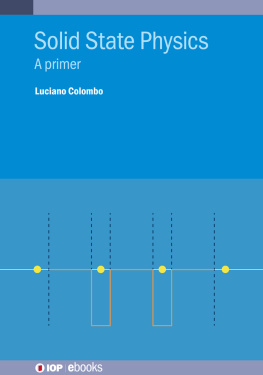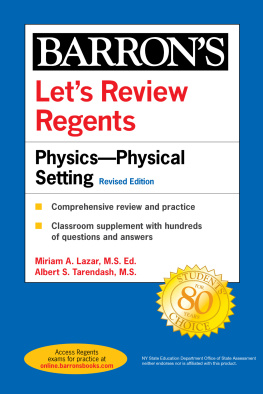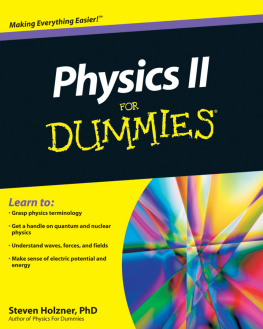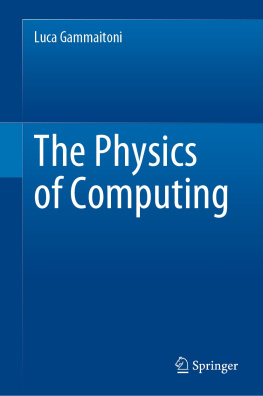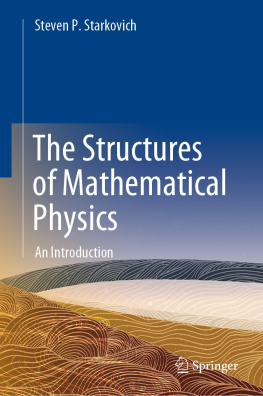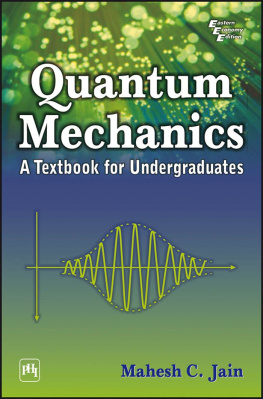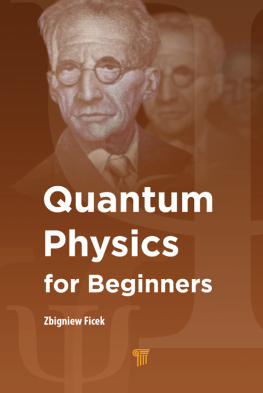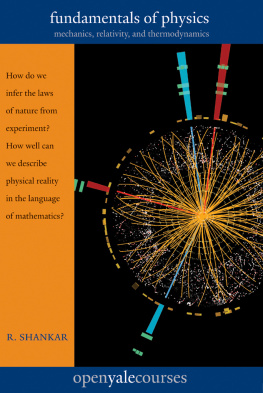Contents
Contents
Solid State Physics
A primer
Luciano Colombo
University of Cagliari, Italy
IOP Publishing, Bristol, UK
IOP Publishing Ltd 2021
All rights reserved. No part of this publication may be reproduced, stored in a retrieval system or transmitted in any form or by any means, electronic, mechanical, photocopying, recording or otherwise, without the prior permission of the publisher, or as expressly permitted by law or under terms agreed with the appropriate rights organization. Multiple copying is permitted in accordance with the terms of licences issued by the Copyright Licensing Agency, the Copyright Clearance Centre and other reproduction rights organizations.
Permission to make use of IOP Publishing content other than as set out above may be sought at .
Luciano Colombo has asserted his right to be identified as the author of this work in accordance with sections 77 and 78 of the Copyright, Designs and Patents Act 1988.
ISBN 978-0-7503-2265-2 (ebook)
ISBN 978-0-7503-2262-1 (print)
ISBN 978-0-7503-2263-8 (myPrint)
ISBN 978-0-7503-2264-5 (mobi)
DOI 10.1088/978-0-7503-2265-2
Version: 20210301
IOP ebooks
British Library Cataloguing-in-Publication Data: A catalogue record for this book is available from the British Library.
Published by IOP Publishing, wholly owned by The Institute of Physics, London
IOP Publishing, Temple Circus, Temple Way, Bristol, BS1 6HG, UK
US Office: IOP Publishing, Inc., 190 North Independence Mall West, Suite 601, Philadelphia, PA 19106, USA
To my students.
Foreword
When Professor Colombo approached me to write the preface of this book, I was both surprised and honoured. Surprised because there are many eminent scholars out there that could do the job, and honoured because I have the greatest respect for Professor Colombo and his work. I have known Professor Colombo for many yearswe interacted on several occasions (often at the MRS Fall Meeting in Boston), he visited me in Montral, I visited him in Cagliari (invited to give a short course on models of laser ablation). I have always been impressed by the clarity and rigour of his mind, his knowledge of various topics in physics, his desire to not only do the best physics but also to communicate it with clarity and passion. He has been a model for me and I tried my best, over the years, to imitate his style.
Professor Colombo told me once that writing a book was some sort of romantic adventure. I was not too sure what he meant (and I did not dare to ask!), but the idea remained in my head. I suspect that he sees this as some sort of an idealised accomplishment, because as a professor, you teach and you need (and love!) the students to understand. This requires clarity and pedagogical aptitudes, and this is precisely what one finds in this excellent book: a text written for students. Having myself taught solid-state physics, in particular recently as an introductory course to undergraduate students (one semester, three credits), this book would have been perfect for my class, both with the material covered and with the level of knowledge in quantum physics, statistical physics and molecular physics expected from students. The amount of material covered is perhaps a bit large for a one-semester course, but some more advanced topics may be left for personal reading. This book fills a gap that is largely unoccupied. There are not many texts that address this topic in such a comprehensive way, and at the beginner level.
I admit that the title of the book, Solid State Physics, surprised me a bit at first, as it seems to me that condensed-matter physics is perhaps more modern and inclusive. But I thought Whats in a name? That which we call a rose, by any other name would smell as sweet (William Shakespeare, Romeo and Juliet). We exchanged on this issue with Professor Colombo and I fully adhere to his views. The solid state is somehow a subset of the condensed state, one that is idealised and can be described using the fabulous mathematical toolbox that applies to periodic systems, including periodic boundary conditions. And this is relatively easy for students to understand and visualise. While the ideal solid state really does not exist in nature (just as a circle does not exist), it provides a reference for understanding more complex systems found in the real world. From a pedagogical viewpoint, further, understanding the basics of the discipline, i.e. solid-state physics, is a prerequisite to dealing with more complex situations, i.e. condensed-matter physics, e.g. with such problems as amorphous systems (lack of periodic order), nano-materials (importance of boundary effects), etc. To cite Professor Colombo, this primer and the others in this series are my personal battle to promote the need to train students, especially at undergraduate level, by passing a strong, robust, general and universally applicable set of fundamentals. This statement, I would say, is the clear act of faith of a remarkable professor, fully dedicated to his art: kudos to Professor Colombo.
The book is organised in three parts, each divided in several chapters. The first part, Preliminary concepts, presents the basic basics. Chapter goes into the heart of the matter and discusses in detail the crystalline structure, both in direct and in reciprocal space (including an introduction to the Bloch theorem and one-electron wavefunctions), and inevitable deviations from the ideal picture (defects). The stage is set.
The second part, Vibrational, thermal, and elastic properties, emerges naturally from chapter on a discussion of elastic properties (strain, stress, elastic constants), moving from a discrete, atomic description of the crystal to a continuous description of it. This topic allows one to connect to the real world: you know that solids are made of atoms, but you see how they react to pressure or temperature, for example. I would not normally cover this subject in my undergraduate coursebut perhaps I should!
The third part, Electronic structure, is where the beef is. It consists of five chapters and begins with a general discussion of electrons in crystals (chapter introduces the now ubiquitous density-functional theoryHohenbergKohn and KohnSham theorems and practical implementation of the method; this is a great idea, not common in solid-state physics books, as it allows students to connect to topical research and shows them that quantum mechanics is a practical tool!
A few more notes; in line with the logic of tell them what you are going to tell them, each chapter starts by a summarising syllabus. This is extremely useful and helps give a direction to the reader. Further, the book includes several appendices where specific and useful topics are discussed (like, for instance, Essential thermodynamics, The tight-binding theory). Finally, the text contains many illustrations that are very well done and very informative; graphical representations of complex (or abstract) concepts that describe real-world objects is extremely useful for students to develop their intuition.
This book is a primer and, in that respect, cannot cover the subject matter in an exhaustive manner. Yet, I find it to be remarkably complete, in particular for a book intended to undergraduate students. And all of this in 250 pages is a genuine tour de force. True, there are some topics that could have been covered (e.g. superconductivity), but there is already a lot of material for a one-semester course. I would have loved to have this book for my class. Thanks to Professor Colombo for this excellent addition to the literature. I predict that it will become a classic.

